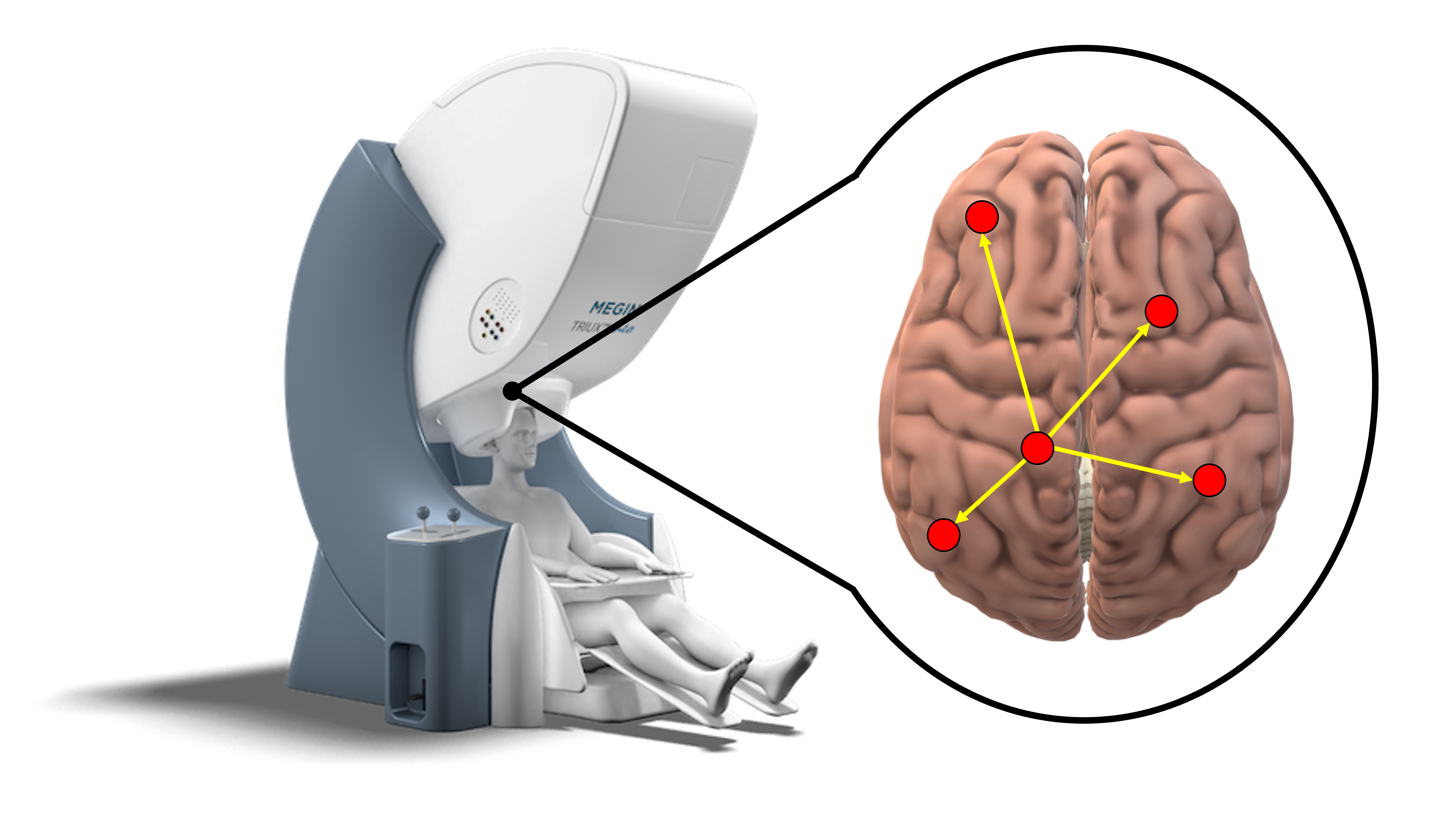
FOCUS
MEG:IN THE BUILDING
WHAT WILL THE NEW MEG BRING TO THE CAMPUS BIOTECH?

Foregoing the arrival at Campus Biotech of the first MEG in Switzerland, the Human Neuroscience Platform shares a few words on how the MEG will integrate the existing platforms.
How will the MEG – a MEGIN TRIUX™ neo – fit into the scientific environment of the HNP?
The HNP already provides a large variety of scientific tools and imaging platforms dedicated to Neuroscience in general. The facilities include MRI, electroencephalography (EEG), Virtual Reality, Neuromodulation, Robotics, Sleep Research, and Methods and Data.
The MEG will join hands with the EEG equipment as part of the MEEG-BCI facility, supervised by Dr Gwenael Birot. The actual MEG platform will be located inside the H4 building of Campus Biotech, in very close proximity to the HNP experts.
As usual, the HNP will provide expertise, training and support towards all researchers eager to use the equipment for scientific purposes.

How does the addition of an MEG enrich the scientific environment on Campus?
MEG perfectly complements other neuroimaging techniques such as MRI or EEG already present at Campus Biotech.
Compared to MRI, MEG – like EEG – stands out because of the high temporal precision that can be measured, in milliseconds rather than seconds for MRI. In contrast, MRI will win the comparison in terms of spatial resolution. In addition, MEG detects and quantifies brain activity directly, unlike functional MRI which is based on changes in oxygen and blood flow.
Compared to EEG, MEG can benefit from better signal in subcortical areas typically very noisy in EEG because they are located far from the sensors, or from integrated motion correction. MEG can also benefit from practical advantages in terms of speed of installation and comfort for the subject, which can facilitate access to certain patient or child populations.
This reinforces the true strength of the Biotech Campus: to provide access to a variety of imaging platforms in one place, so that researchers can choose and benefit from the best of each technology. For example, by combining MEG and MRI, researchers will be able to decipher with extreme precision WHEN neurons activate, determine their position and superimpose this information on an extremely detailed mapping of the brain obtained with MRI.
What impact will the MEG have?
The HNP is user driven, and the arrival of the MEG answers a real need from the community. The NCCR Evolving Language (https://evolvinglanguage.ch/ – a swiss national center co-supervised between Geneva and Zurich) has been involved from the very start on the acquisition on this MEG. In addition, several groups and projects are already eager to start working on this new device, so the ramp up phase is expected to be short, and results to start arriving soon.
Being the first MEG in Switzerland, this arrival is also a great opportunity to foster collaborations with national and international groups. The HNP is more than happy to share developments, expertise and time to help build a strong neuroimaging network, and help to disseminate knowledge and science as much as possible.

MEG as a new neuroimaging tool available at Campus Biotech in order to better understand the brain.
A MEG ON CAMPUS IN 2022
The Human Neuroscience Platform (HNP) at Campus Biotech will acquire and install a new MEG platform in summer 2022. The new MEGIN Triux neo will integrate the already existing MEEG-BCI MRI facility.
This ambitious project is the result of an exciting collaboration between the NCCR Evolving Language, the Geneva University Hospitals (HUG), the University of Geneva (UNIGE), the Ecole Polytechnique Fédérale de Lausanne (EPFL) and the Fondation Campus Biotech Geneva (FCBG).

